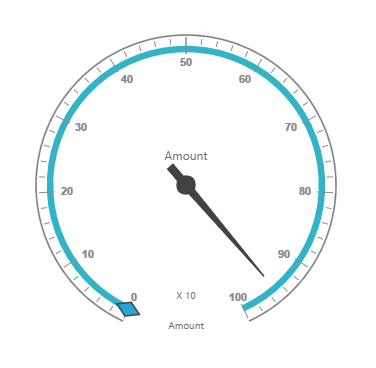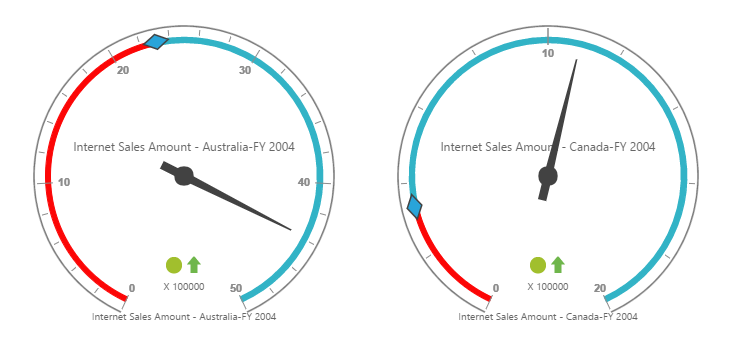- Configure pivot gauge through the model properties
Contact Support
How to
29 Mar 20186 minutes to read
Configure pivot gauge through the model properties
There comes a time when you want to set pivot gauge properties other than using PivotGaugePropertiesBuilder i.e., in the Controller side. At that time, you can pass PivotGaugeProperties model instance as a parameter to the pivot gauge helper method.
We can set properties to pivot gauge control in server-side using the PivotGaugeProperties class and it is used in the view page with the help of pivot gauge helper overload.
In addition to the id parameter of pivot gauge helper method, we can also pass PivotGaugeProperties model as another parameter to the pivot gauge helper method.
Relational
The following code example explains how to render the pivot gauge control in relational mode.
@model Syncfusion.JavaScript.Models.PivotGaugeProperties
@(Html.EJ().Pivot().PivotGauge("PivotGauge", Model))
<script type="text/javascript">
function load(args) {
args.model.dataSource.data = pivot_dataset;
}
</script>namespace PivotGauge
{
public class PivotGaugeController: Controller
{
public ActionResult PivotGaugeFeatures()
{
Syncfusion.JavaScript.Models.PivotGaugeProperties pivotgauge = new Syncfusion.JavaScript.Models.PivotGaugeProperties();
PivotDataSource pivotgaugeDS = new PivotDataSource();
List<Field> rows = new List<Field>();
rows.Add(new Field() { FieldName = "Country", FieldCaption = "Country" });
rows.Add(new Field() { FieldName = "State", FieldCaption = "State" });
pivotgaugeDS.Rows = rows;
List<Field> cols = new List<Field>();
cols.Add(new Field() { FieldName = "Product", FieldCaption = "Product" });
pivotgaugeDS.Columns = cols;
pivotgauge.Load = "load";
List<Field> values = new List<Field>();
values.Add(new Field() { FieldName = "Amount" });
pivotgaugeDS.Values = values;
pivotgauge.DataSource = pivotgaugeDS;
return View(pivotgauge);
}
}
}As a result of the previous code example, the pivot gauge will be displayed as shown below:

OLAP
The following code example explains how to render the pivot gauge control in OLAP mode.
@model Syncfusion.JavaScript.Models.PivotGaugeProperties
@(Html.EJ().Pivot().PivotGauge("PivotGauge", Model))namespace PivotGauge
{
public class PivotGaugeController: Controller
{
public ActionResult PivotGaugeFeatures()
{
Syncfusion.JavaScript.Models.PivotGaugeProperties pivotgauge = new Syncfusion.JavaScript.Models.PivotGaugeProperties();
PivotDataSource pivotgaugeDS = new PivotDataSource();
pivotgaugeDS.Data = "https://bi.syncfusion.com/olap/msmdpump.dll";
pivotgaugeDS.Cube = "Adventure Works";
pivotgaugeDS.Catalog = "Adventure Works DW 2008 SE";
List<Field> rows = new List<Field>();
rows.Add(new Field() { FieldName = "[Date].[Fiscal]" });
pivotgaugeDS.Rows = rows;
List<Field> cols = new List<Field>();
cols.Add(new Field() { FieldName = "[Customer].[Customer Geography]" });
pivotgaugeDS.Rows = cols;
List<MeasuresItems> measures = new List<MeasuresItems>();
measures.Add(new MeasuresItems() { FieldName = "[Measures].[Internet Sales Amount]" });
List<Field> values = new List<Field>();
values.Add(new Field() { Measures = measures, Axis = Syncfusion.JavaScript.AxisName.Column });
pivotgaugeDS.Values = values;
pivotgauge.DataSource = pivotgaugeDS;
return View(pivotgauge);
}
}
}As a result of the previous code example, the pivot gauge will be displayed as shown below:
